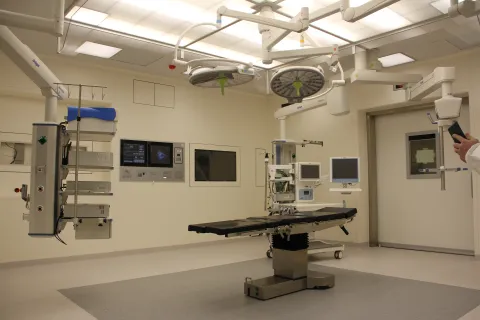How to streamline your technological transition before you even start

When implementing new technology, decades of research show that managers and employees often bring their full and immediate attention to ensuring the technology is installed and useful in as little time as possible. This is primarily to allow for new possibilities but also to secure their return on investment (ROI). However, according to a recent study by Matthew Beane (Department of Technology Management at UCSB), this preoccupation with rolling out new technology drives counterproductive allocation of resources across the entire portfolio of technology in a firm. This will often degrade prior technology, burden experts with it, and lead decision makers to make uninformed or even dangerous choices about technology farther down the line.
While maintaining (or improving) results with new technologies is a tempting top priority, Beane’s new research shows that in many cases that approach will actually work against that organization’s best interests. In his field study, Beane spent two years observing robotic surgery at a top tier teaching hospital. Through participant observation, interviews, and statistical analysis of medical records and usage data, he discovered that the hospital was allocating its most experienced talent to their older surgical system and devising nonstandard workarounds to produce the same results as those achieved with their newer system. To maximize short-term ROI, the new system received inexperienced talent, along with the best supplies, infrastructure, and resources. This skewed split was what allowed the hospital to maintain accurate and efficient results from both machines. At the same time, it put undue stress on experienced talent and degraded the older system, primarily through reduced maintenance. In the end, the difficulty of maintaining this process intensified over time.
The most surprising revelation from this study is that managers and employees were unaware of the extent of this growing divide until it was revealed to them through Beane’s research. Experienced staff hadn’t noticed that they were using the old system more and more, for example. Even maintenance staff were surprised that they spent more time and effort on the old system even as the new system received more preventative maintenance. Because of this limited awareness, staff and surgeons passed a distorted view of their experiences to their higher ups. Management often only received vague complaints that they just dismissed as unsubstantiated claims, especially given the tangible positive results they could see from both systems. It wasn’t until the presentation of Beane’s research that the risks of the older, degrading system were finally revealed to management in detail, and they realized that they needed to prioritize acquiring a new system that would free up their resources and talent.
The crux of this matter is that, if management had been more proactive throughout the implementation of the new system, they would have caught this resource allocation problem earlier. Even if they hadn’t decided that the risks were worth immediate action, they would have been able to see the full picture and make more informed decisions.
How can you improve resource allocation and results during technological transitions?
If your organization is ready to or currently in the process of bringing new technology into the fold, you’ll want to make sure that you identify resource tradeoffs early. Here are 3 steps you can take to improve resource allocation and its results as you integrate your new purchase into your existing processes:
- Assess your resource allocations before implementation. Gauge how you are allocating talent, infrastructure, maintenance, and tasks across your existing technological stock. This will allow you to make more realistic allocations to maximize your efficiency. Employees, this is also a great time to ensure that you’re providing your upper management with detailed information about your processes so they’re working with the most accurate data.
- Allocate resources deliberately. Take the time to define your goals for the successful setup of your new technology. However, make sure to clarify potential risks like those in Beane’s study, such as strain on top talent and degradation of prior technological investments. Then, decide resource tradeoffs between your legacy and new technologies with these priorities in mind. Make sure that your entire team is aware of these priorities and putting them first throughout the transition. This will limit miscommunication and frustration, and help keep everyone on the same page.
- Create checkpoints for potential resource reallocation. Presume that, even with your attention and support, preferred resources will drift towards newer technology, causing unnecessary problems. So, once the handoff between older and newer technologies has begun, track the transition’s health based on its progression along your pre-prepared timeline. If problems appear that either stray from the timeline or are caused by a specific resource adjustment, you and your team can catch and address them more quickly.
With these steps, you’ll provide improved insight and control as you expand your technological portfolio and be better equipped to adapt and problem-solve when issues do arise.

 Instagram
Instagram LinkedIn
LinkedIn Twitter
Twitter